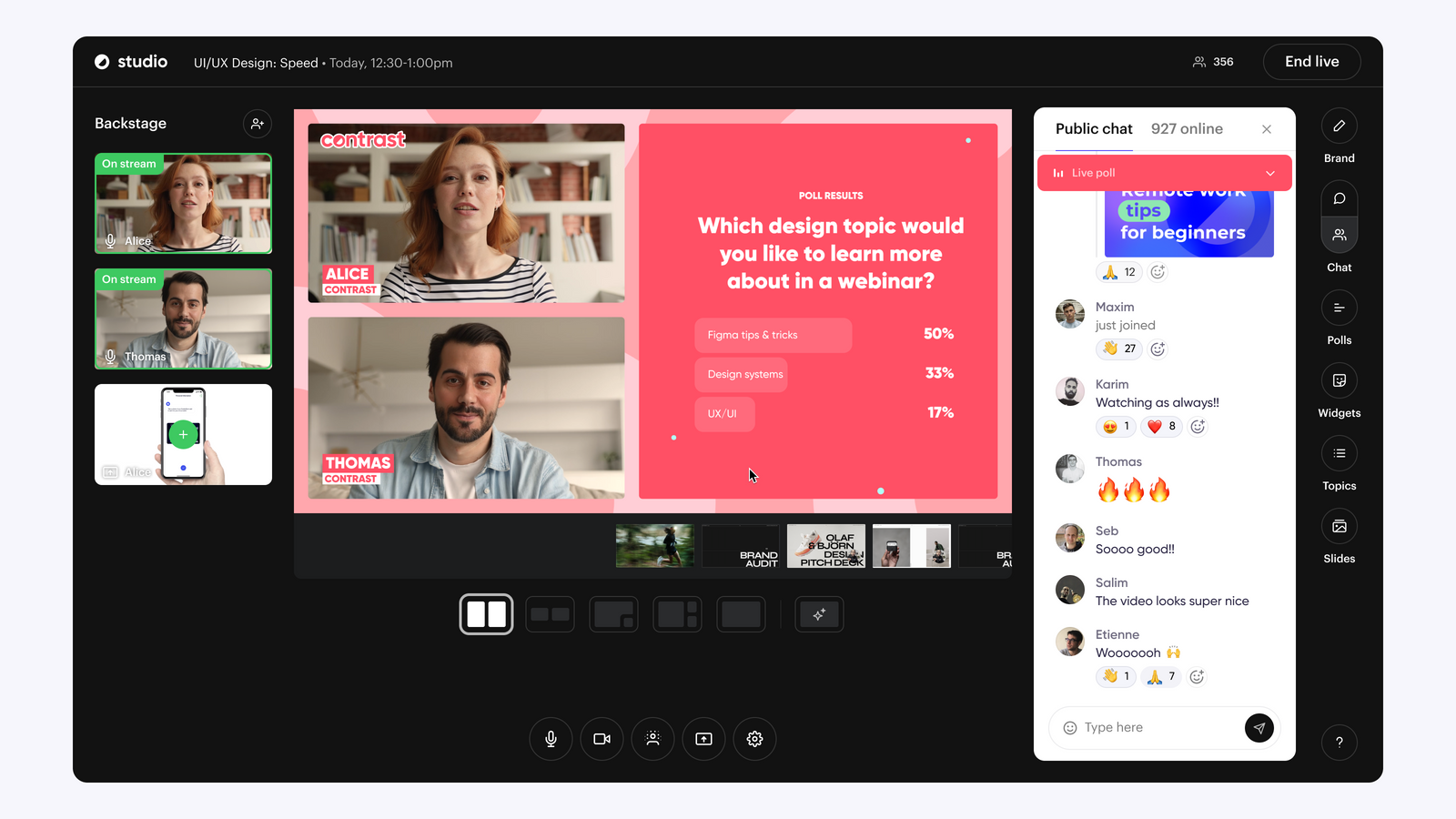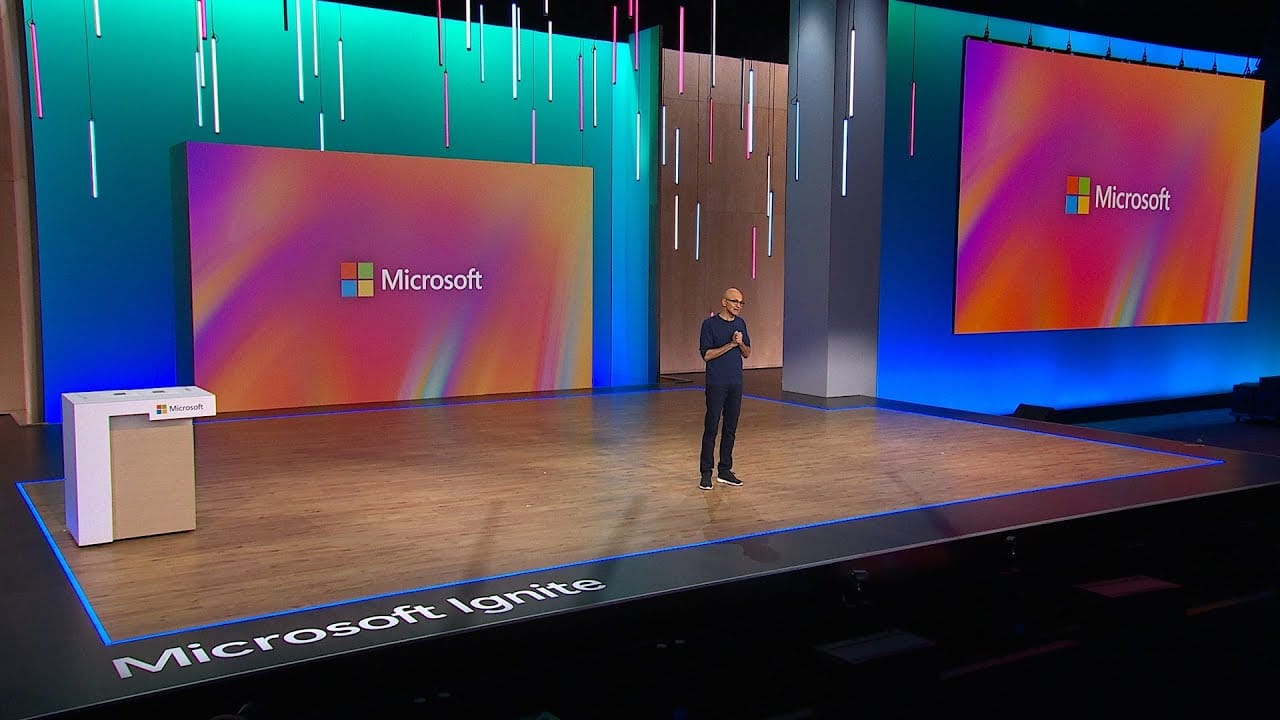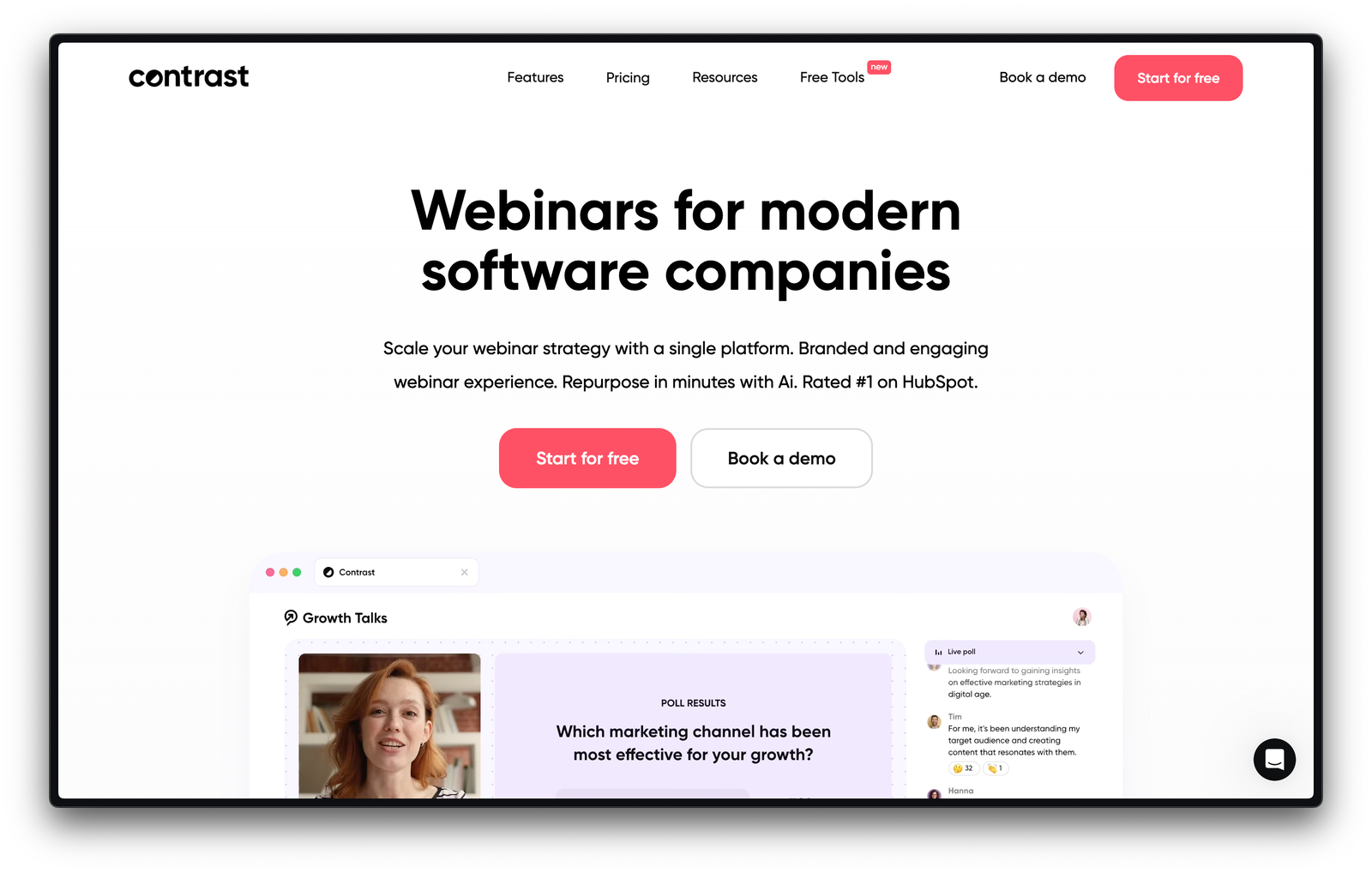Hybrid Events: What are They and How to Run Them in 2025?

Hybrid events have completely changed how businesses connect with their audiences, blending the best of both physical and virtual events.
By allowing people to attend either in person or online, these events offer flexibility and give businesses the chance to engage a larger audience, all without losing the personal feel of live gatherings.
In this guide, we’ll break down the essentials of hosting a successful hybrid event. From understanding what hybrid events are and their benefits, to dealing with common challenges and following best practices, this article covers everything you need to pull off a smooth hybrid experience.
What is a Hybrid Event?
A hybrid event mixes physical and virtual participation, giving attendees the option to join in person or remotely.
By combining these two formats, businesses can create a smooth experience that reaches both in-person and online audiences, breaking down geographical barriers and improving accessibility.
Types of hybrid events include:
- Conferences and Seminars: Stream traditional conferences live to a global audience.
- Product Launches: Showcase new product launches/updates to both local attendees and a worldwide audience through live streams.
- Corporate Meetings: Connect employees, stakeholders, and partners from various locations, eliminating the need for everyone to be in the same room.
The success of a hybrid event depends on reliable tech—like high-quality video conferencing tools, strong internet connectivity, and solid audiovisual setups.


Hybrid Events that Wow Attendees
Start for free with up to 30 registrants. No credit card needed.
Start for freeBenefits of Hybrid Events
Greater Flexibility and Adaptability
Hybrid events are super flexible, making it easier to handle disruptions during a live event. If some attendees can’t travel due to restrictions or other reasons, they can still participate virtually, unlike an in-person event. This flexibility helps the event go on without major setbacks.
Improved Audience Engagement
Hybrid events offer new ways to engage people. Features like live polls, Q&A sessions, chat options, and breakout rooms let both in-person event and virtual attendees actively participate.

Virtual networking rooms are another feature that improves engagement. The virtual component of hybrid events allows for interactive features like live polls and Q&A sessions, improving engagement.
These features make the event more interactive and keeps everyone engaged.
Broader Reach and Higher Attendance
By eliminating the need for physical travel, hybrid events can attract attendees from around the world. This can boost your attendance numbers and reach.
The growing importance of virtual and hybrid events in modern event strategies, particularly in the wake of technological advancements, cannot be overstated. Plus, you can record and offer content on demand, ensuring that the event continues to engage your audience long after it’s finished.
Data-Driven Insights
With hybrid events, you can gather valuable data through digital platforms—like attendee engagement, participation levels, and feedback. This can be a great source of lead generation.
These insights are useful for understanding audience behavior and improving future event strategies.
Cost Efficiency and Improved ROI
Hybrid events can be more budget-friendly than traditional in-person ones. You save on travel, lodging, and venue costs, while still reaching a big audience. Plus, offering both in-person and virtual tickets opens up multiple revenue streams.
Environmental Sustainability
Hybrid events are also greener, as they reduce the need for travel and cut down on carbon emissions as not all attendees need to be physically present.
For companies focused on sustainability, hybrid formats let them host large events while reducing their environmental and carbon footprint—something eco-conscious audiences will appreciate.
Increased Reach and Accessibility
Hybrid events offer a unique opportunity to increase reach and accessibility for attendees. By providing both in-person and virtual experiences, hybrid events can cater to a wider audience, including those who may not have been able to attend in person due to geographical or logistical constraints.
This can be particularly beneficial for hybrid events that aim to reach a global audience or for organizations with a large remote workforce. Reaching a global audience through hybrid events ensures that the content and networking opportunities are accessible to participants from different parts of the world.
In addition, hybrid events can also provide accessibility features such as closed captions, audio descriptions, and sign language interpretation, making it possible for attendees with disabilities to fully participate in the event.
By incorporating these features, hybrid events can promote inclusivity and diversity, ensuring that all attendees have an equal opportunity to engage with the content and networking opportunities.
Challenges of Hosting Hybrid Events
Ticket Pricing Dilemmas
It can be tricky to set the right ticket prices for both in-person event and virtual attendees. You need to make sure both groups feel they’re getting their money’s worth.
Offering different tiers of virtual tickets—like standard and premium packages—can help add value for those willing to pay more. Plus, providing tailored content and experiences for in-person attendees ensures they feel valued and improves their overall event experience.
Choosing the Right Venue and Virtual Platform
Your venue needs to have strong internet and top-notch AV systems to support both in-person event and virtual audiences. The virtual platform should also be user-friendly and feature-rich, offering live streaming, chat, polls, and networking options to keep online attendees engaged.
Integrating virtual event platforms is crucial to improve engagement for virtual participants, ensuring a smooth experience for those who cannot attend in person.
Providing a smooth experience for all attendees, whether they are present physically or virtually, is essential to the success of your event.
Time Zone Management
When you have a global audience, time zones become a challenge.
When scheduling event sessions, make sure to pick the best day and time so they’re accessible to as many people as possible. Offering on-demand content can help ensure that attendees from different regions can still engage with the event.
Bridging the Gap Between In-Person and Virtual Attendees
It can be tough to create a cohesive experience for both in-person and virtual attendees. Plan activities that encourage interaction between the two groups—like shared Q&A sessions, virtual networking rooms, and collaborative workshops—so no one feels left out, regardless of how they’re attending.

Types of Events
In-Person Events
In-person events are the traditional events where attendees come together at a physical location, such as a conference center, hotel, or exhibition hall.
These events offer the invaluable benefit of face-to-face interaction, providing opportunities for networking, collaboration, and creating memorable experiences.
In-person events are particularly effective for building relationships and fostering a sense of community among attendees.
Virtual Events
Virtual events take place entirely in a digital environment, allowing remote attendees to join from anywhere with an internet connection. These events can be live or pre-recorded, offering flexibility and convenience.
Virtual events are cost-effective and accessible, making them an attractive option for those who cannot attend in-person events. They provide a platform for interactive sessions, live Q&A, and networking opportunities, ensuring that virtual attendees remain engaged and connected.

Hybrid Events that Wow Attendees
Start for free with up to 30 registrants. No credit card needed.
Start for freeKey Elements of a Successful Hybrid Event
To host a successful hybrid event, you need to focus on a few important elements that focus on both in-person and virtual attendees.
Here’s what to prioritize:
Content
Developing a strong content strategy is essential. Aim for engaging sessions, workshops, and presentations that appeal to both in-person and virtual attendees.
Consider a variety of formats, such as panel discussions, keynote speeches, and interactive workshops to maintain interest across all platforms.
Community
Creating a sense of community is important. Use interactive features like live Q&A, polls, and social media integration to encourage connections among attendees.
Creating dedicated online spaces for virtual participants to network with those attending in person can help bridge the gap between the two groups.

Analytics
Tracking and analyzing attendee engagement is important for measuring the success of your event. Use analytics tools to measure event analytics and gather data on both in-person and virtual participation.
This information will help you understand what worked well and identify areas for improvement in future events.
By incorporating these key elements, you can create a successful hybrid event that engages and satisfies both in-person and virtual attendees.
Successful Hybrid Event Examples
Microsoft Ignite

Microsoft’s developer and IT professional conference blends in-person event keynotes, sessions, and demos with virtual live streams and interactive online experiences to cater to its large international audience. Looking at hybrid event examples like Microsoft Ignite can help understand how successful events integrate both in-person and virtual components.
Cannes Lions International Festival of Creativity

This renowned event in the advertising and creative industry transitioned to a hybrid model, featuring both physical attendees in Cannes and virtual participants through online broadcasts, workshops, and digital networking sessions.
Adobe MAX

Adobe’s annual creativity conference offers a hybrid experience, featuring both in-person events and virtual sessions that include workshops, creative labs, and keynotes by industry leaders, accessible to global participants.
How to Transition to Hybrid Events
Transitioning to hybrid events requires a strategic approach that considers the needs and expectations of both in-person and virtual attendees.
Here are some tips to help you make the shift smoothly:
- Start Small: If you’re new to hybrid events, begin by incorporating virtual elements into your existing in-person event. This could be as simple as live streaming key sessions or adding virtual Q&A sessions.
- Choose the Right Platform: Selecting a hybrid event platform that supports both in-person event and virtual attendees is important. Look for features like live streaming, chat, and polling to keep your virtual audience engaged.
- Communicate with Attendees: Clear communication is key. Make sure to inform your attendees about the hybrid format and its benefits. Provide detailed instructions on how to participate virtually, so everyone knows what to expect and how to get the most out of the event.
- Test and Iterate: Before the big day, test your hybrid event format and technology thoroughly. Conduct dry runs to identify and fix any issues. Be prepared to make adjustments based on feedback and observations to ensure a smooth experience for all attendees.
By following these tips, you can successfully transition to hybrid events and provide an engaging and satisfying experience for both in-person and virtual attendees.
Step-by-Step Guide to Hosting a Hybrid Event
Hosting a hybrid event can be an exciting opportunity, but the planning process may seem overwhelming.
Here’s a straightforward step-by-step guide to help you navigate it all.
- Identify Your Audience and Goals: Start by defining what your audience expects from both the online and in-person event and what you want to achieve.
- Select the Right Event Format: Choose a format that suits your event—whether it’s live streaming, on-demand content, or a mix. Highlight the characteristics and differences between an in-person event and other formats, emphasizing the interactive nature of a live event.
- Create a Comprehensive Timeline: Plan each stage, from content creation to marketing, registration, and rehearsals. Effectively communicate details when planning the next hybrid event to ensure both online and in-person participants are well-prepared.
- Prepare a Checklist: Include everything from venue logistics to tech setups.
- Engage Speakers and Moderators: Choose guest speakers who can engage both in-person and online audiences. Experienced moderators can help manage transitions and interactions.
- Market Effectively: Use social media, email campaigns, and digital ads to promote the event. Consider offering early-bird discounts to boost registrations.
- Optimize Venue Setup: Ensure the venue has strong internet, cameras, and microphones to support a seamless experience.
- Incorporate Interactive Features: Keep people engaged with live polls, quizzes, and breakout sessions.
- Collect Feedback: Post-event surveys help you understand what worked and what didn’t.
- Analyze Performance: Track metrics like attendance and engagement
Top Hybrid Event Platform Options
Choosing the right platform is important for creating a smooth experience for both in-person and virtual attendees.
The best webinar platforms will allow you to engage your audience and ensure everyone feels connected, regardless of how they choose to participate — online or in-person.
Here are some top options to consider:

- Contrast: Great for webinars, offering easy-to-use tools for audience engagement and helpful analytics. It integrates well with CRM systems to help manage leads. Virtual event platforms play a crucial role in enabling remote participation and enhancing engagement for virtual attendees.
- Webex Events: Good for larger organizations, with a focus on security and reliable connectivity.
- Zoom Events: Familiar and easy to use, allows for multi-session events and integrates with existing Zoom accounts.
Key Takeaways
Hybrid events have transformed the way businesses connect with their audiences by blending the best of both worlds—physical and virtual experiences.
Here are some key points to keep in mind:
- Maximize Flexibility: Make sure your event can proceed even with unexpected challenges. A hybrid event allows attendees to engage from the comfort of their own location while still offering the benefits of a physical event.
- Expand Your Reach: Use the hybrid format to attract a global audience and increase visibility. An in-person event offers greater engagement and networking opportunities, while the online event provides cost-effectiveness and flexibility for participants.
- Interactive Online Experiences: Emphasize the importance of interactive online experiences to engage virtual attendees effectively.
- Focus on Engagement: Interactive tools can keep all attendees involved, no matter how they’re participating.
- Measure Success: Use data and feedback to improve future events and strategies.
By following these strategies, you’ll be set to create hybrid events that engage audiences, deliver value, and maximize ROI.

Hybrid Events that Wow Attendees
Start for free with up to 30 registrants. No credit card needed.
Start for free